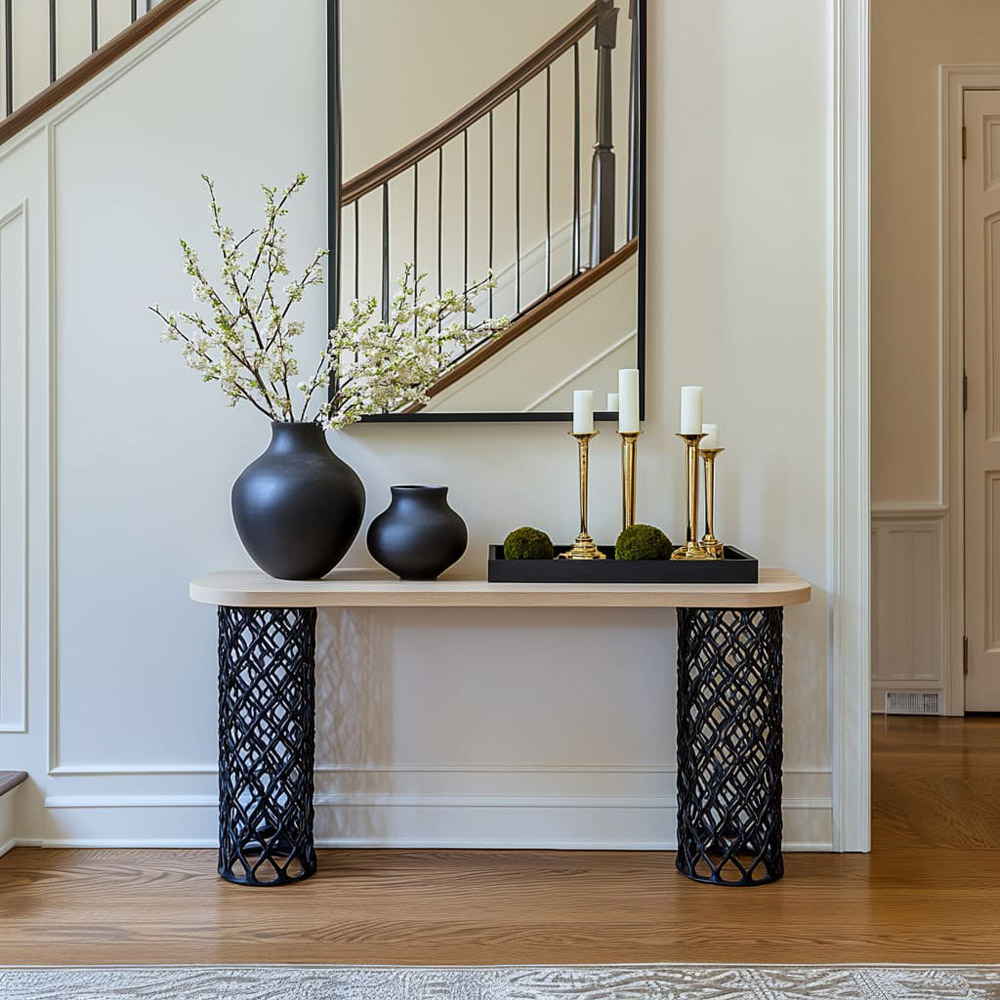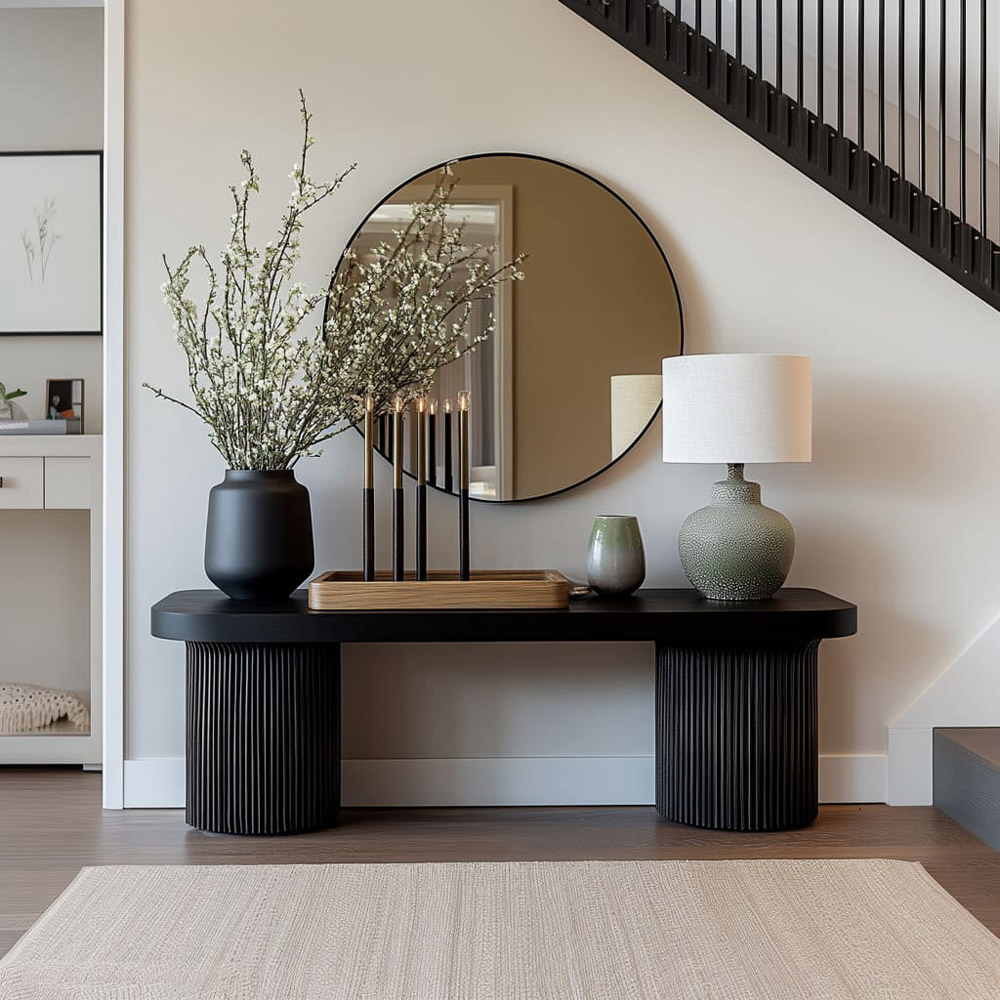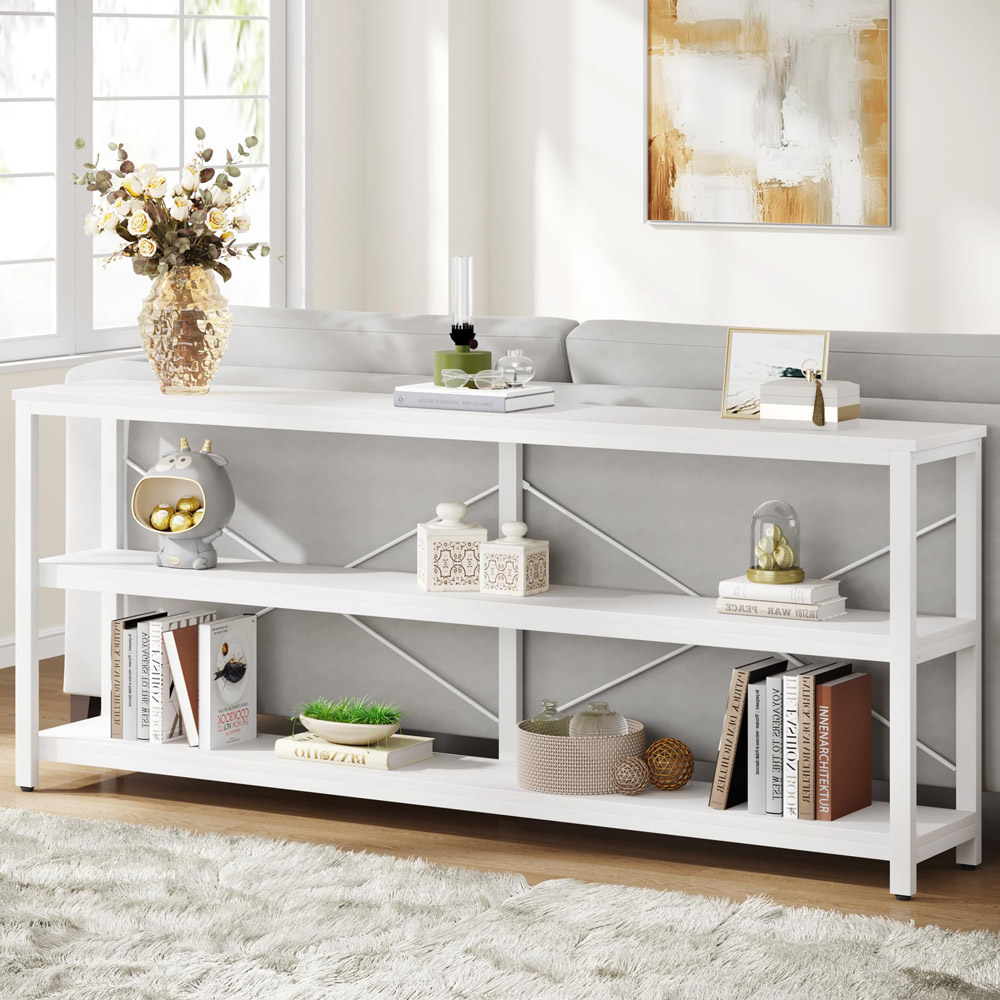A console table or entry table may seem like a minor detail in home design, but it plays a major role in establishing the tone for your entire space. As the first piece of furniture seen upon entering a home, it offers a unique opportunity to blend aesthetics with practicality. Styling this narrow yet impactful surface is an art that balances form, function, and personal expression. Whether you live in a small apartment or a spacious home, understanding how to style your entryway or console table can elevate your space dramatically.
Contents
Understanding the Purpose of a Console Table
Before diving into the styling process, it’s important to understand the role of a console table. Typically placed in entryways, hallways, behind sofas, or even in dining rooms, console tables are narrow, long tables designed to be both decorative and functional.
An entry table refers to a console table placed near the front door. It often serves as a catch-all for everyday essentials—keys, mail, sunglasses—while setting the stage for the rest of your home’s decor. The console table is more broadly used and may support lighting, books, plants, or art pieces. Though their uses may vary slightly, the styling fundamentals remain the same.

Core Styling Principles
Styling a console or entry table effectively requires attention to proportion, balance, and composition. Below are the key principles to guide your approach:
1. The Rule of Three
Designers often follow the “rule of three” when arranging objects—grouping items in threes or other odd numbers tends to look more natural and visually engaging. When styling, try to incorporate three main elements: height, texture, and layers.
2. Symmetry vs. Asymmetry
Symmetrical arrangements provide a classic, orderly look—perfect for traditional or minimalist interiors. Asymmetry, on the other hand, offers a more relaxed, dynamic vibe that’s well-suited for modern or bohemian spaces. Choose the approach that aligns with your style preferences.
3. Use of Negative Space
Avoid overcrowding the surface. Leaving intentional gaps between objects can make your arrangement feel curated rather than cluttered. Negative space helps emphasize focal points and gives the eye a place to rest.
4. Varying Heights and Shapes
Incorporate objects of varying heights and shapes to add dimension. For example, pair a tall lamp with a medium-sized vase and a stack of books. Layering creates depth and keeps the eye moving across the arrangement.
Essential Elements to Include
Successful styling starts with a few key components. These elements can be mixed and matched to suit any design aesthetic:

Anchor Piece
Every console table arrangement should have a central “anchor” item—typically a large mirror, framed artwork, or statement piece that sits above or behind the table. This creates visual structure and draws attention.
Lighting
Table lamps or sconces add warmth and function to the console table. Lamps also bring verticality and help balance horizontal objects like trays or books.
Functional Decor
Bowls, trays, and boxes serve as both decorative accents and storage solutions. A small tray can neatly hold your keys and mail while blending seamlessly into the overall design.
Greenery
A touch of nature breathes life into any arrangement. Use potted plants, vases with fresh flowers, or even dried arrangements. Greenery softens the space and introduces organic texture.
Personal Touches
Display a few items that reflect your personality or memories—framed photos, travel souvenirs, or curated books. These create a sense of warmth and authenticity.
Seasonal and Thematic Styling
Your console table is an ideal canvas for seasonal updates. During fall, incorporate warm tones, candles, and mini pumpkins. In winter, add evergreen clippings, metallics, or string lights. For spring and summer, opt for fresh florals, light fabrics, and pastel accents.
Thematic styling can also reflect your personal interests or home’s overarching design. Whether you’re going coastal with seashells and driftwood or minimalist with clean lines and monochrome palettes, your table should tie into your interior theme.
Styling Mistakes to Avoid
Even with the right elements, it’s easy to make a few common missteps. Avoid these pitfalls for a more polished look:
- Overcrowding: Less is more. Too many items can make your table look messy and reduce visual impact.
- Ignoring Scale: Ensure your decor items are appropriately sized for the table and wall space.
- Flat Styling: Avoid using only low-profile or similar-height objects. This creates a dull, flat appearance.
- Prioritizing Form Over Function: If it’s an entry table, don’t forget to incorporate storage or catch-all solutions.
Styling Tips for Different Design Styles
Modern: Use clean lines, bold contrast, and minimalist decor. A monochrome color palette with geometric shapes works well.
Farmhouse: Think rustic wood finishes, vintage accessories, and soft textiles like linen runners or cotton baskets.
Coastal: Incorporate light woods, whites, soft blues, and coastal motifs like coral or sea glass.
Bohemian: Layer patterns and textures, use global-inspired objects, and introduce color through plants, textiles, or artwork.
Traditional: Choose elegant pieces, symmetrical setups, and classic decor like candlesticks or floral arrangements.
Minimalist: Stick to a few purposeful items in neutral tones. Negative space is key.
Budget-Friendly Styling Tips
You don’t need to spend a lot to style a beautiful table. Thrift stores and secondhand shops are treasure troves for unique decor pieces. Repurpose items from other rooms—books, baskets, candles, or old frames can be given new life on a console table.
Consider DIY options, like painting an old mirror or crafting a tray. Even switching out greenery seasonally from your garden can refresh the look.
Final Thoughts
Styling a console or entry table is about more than just aesthetics. It’s about creating a welcoming, intentional space that introduces your home’s personality from the very first step inside. With a few fundamental principles and a mix of personal and functional items, your console table can go from overlooked to unforgettable.

